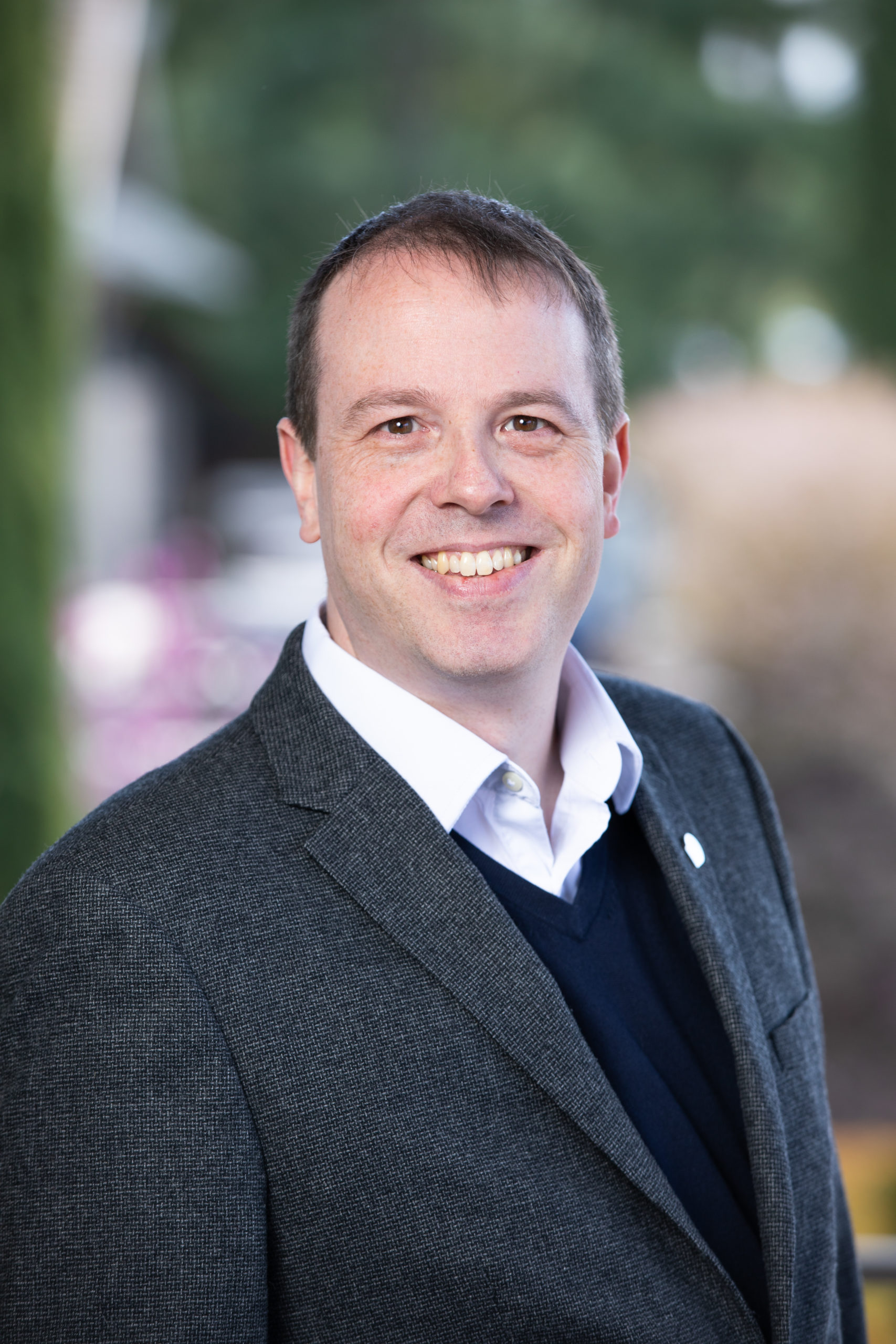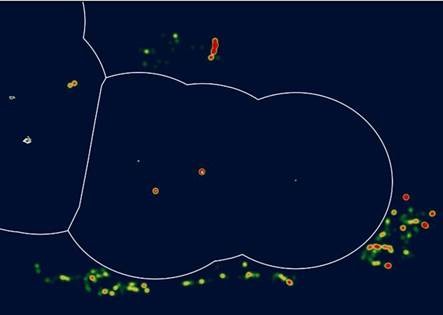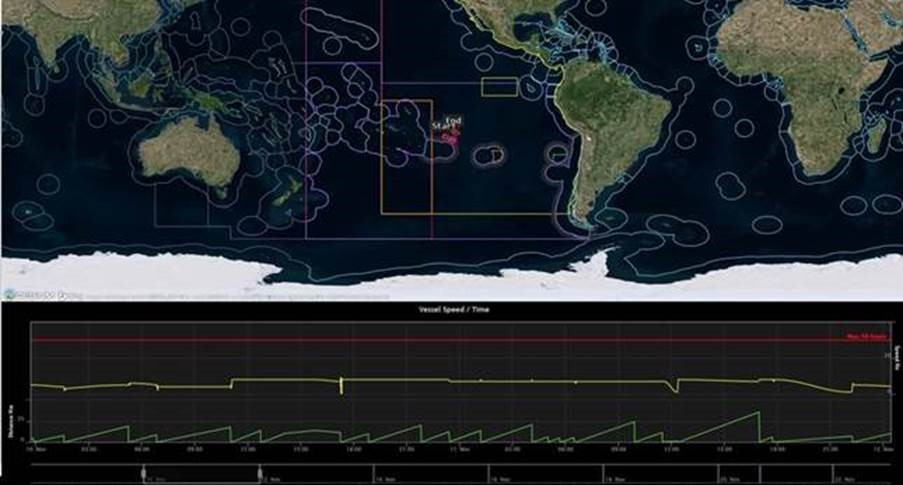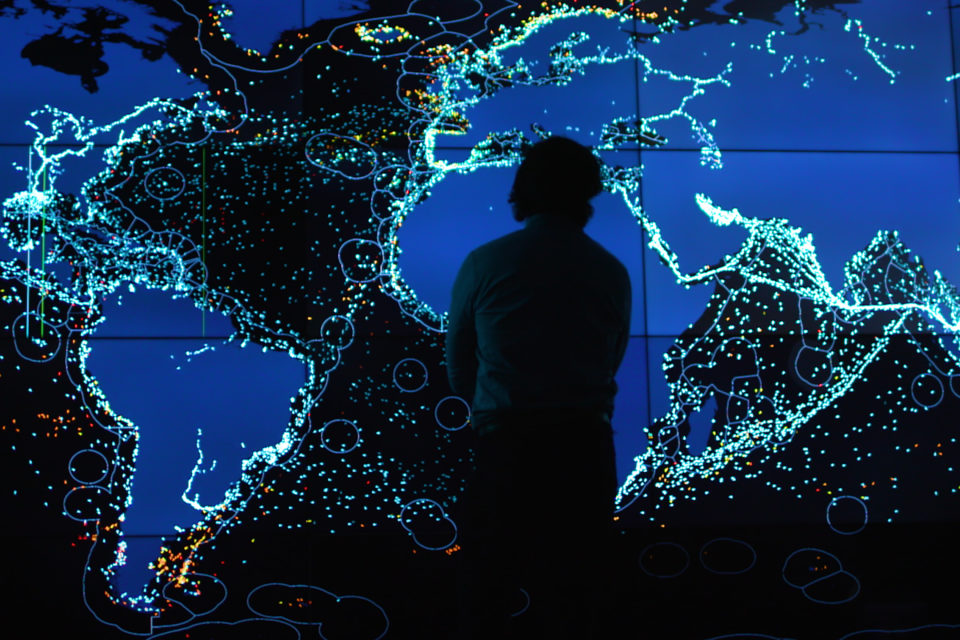Hello and welcome to Microsoft Stories, a new podcast about technology and innovation.
In this episode we are focusing on OceanMind, a UK company that’s using Microsoft’s Azure cloud platform to help protect oceans and tackle illegal fishing across the world. The work undertaken by CEO Nick Wise and his staff has a positive impact on the sustainability of our planet and human rights issues.
We chatted to Nick about innovation at OceanMind, and how his company, which is based in Oxford, can operate so successfully in countries on the other side of the planet.
You will also hear from Eve Joseph, UK Responsibility Manager at Microsoft, about how start-ups are embracing innovative ways of working, and Microsoft’s AI for Good programme.
Click the play button and join us on our journey.
Click here to visit our Podcast page.
Transcript of this episode:
MUSIC INTRO
Hi, I’m Andy Trotman, Head of News at Microsoft UK. Welcome to Microsoft Stories – a new podcast looking at technology and the people who use it.
In this series, I’m trying to answer the question: what is innovation? It means different things to different people. Innovation can be as simple as adding an eraser to the end of a pencil or as complex as sending people to the Moon.
What does it mean to be innovative? How do you know you’re being innovative? Along my journey, I meet people using technology in amazing ways, and discover what innovation means to them.
Join me on my journey.
SOUND OF A RADIO
Last year, I wrote an article for Microsoft’s UK News Centre about a cargo boat that had been stopped by the Thai Navy in Thai waters. Authorities had been looking for the vessel for two years, as they suspected it had been used for illegal fishing and had links to human trafficking.
It had been a long and difficult search. The boat had moved around the Indian Ocean, changing its name and the national flag it displayed. At times it had used the Bolivian flag, known by authorities to be a “flag of convenience”, before sailing to Cambodia and disappearing from tracking systems.
It took a company 6,000 miles away in Oxford, England, to track it down.

NICK: I’m Nick Wise, I’m CEO of OceanMind. And OceanMind is a non-profit organisation that empowers enforcement and compliance to protect the world’s oceans.
OceanMind used Microsoft’s artificial intelligence and satellite imagery to find that boat’s last location and track it in real time as it moved between ports across Vietnam and Cambodia. They then helped local authorities intercept it.
I think it’s a very powerful example of how a seemingly small organisation can use innovation and technology to have a big impact across the world. I was keen to find out more about how OceanMind, which also works closely with the UK government to help monitor overseas territories, operates.
NICK: So, our main areas of focus are illegal fishing. That’s our core focus and where our main expertise comes from. So two main areas of focus are illegal fishing. That’s our core focus and where our main expertise comes from, and we started our work in marine protected areas and then happy expanded out into general purpose fisheries, enforcement, and then more sort of general purpose, person purpose ocean compliance. And in that we’re also looking at illegal salvage, so monitoring of protected wrecks, and also human trafficking on the oceans, because there’s a strong overlap between illegal fishing and human rights abuses on fishing vessels, which includes things like human trafficking and forced labour and bonded labour and modern slavery.
OceanMind’s work is global but one of its main areas of focus is Southeast Asia, as that’s where most of the world’s fishing happens. Like it or not, our oceans are big business, with an estimated 520 million people relying on the fishing industry for work and 2.6 billion people depending on marine life for a substantial part of their diet.
With so much demand, illegal fishing is a problem. According to the World Resources Institute, 24% of the Pacific Ocean’s marine catch is unreported every year. That’s 15 million tonnes of fish. Up to half of this unreported catch is illegally traded in international markets every year. There is also the knock-on effect on wildlife and economies, and links to organised crime.
Innovation is crucial for the authorities combatting the criminals. OceanMind is no different, using the processing power and speed of Microsoft’s Azure cloud platform to handle the massive amounts of image data from satellites, in order to stay one step ahead.
NICK: We’ve had to innovate new ways of moving data into the cloud for analysis more quickly, so that we can achieve those real-time analyses that we desire. And so working at how to use the cloud technologies in a way that allows the throughput that we need, and allows us to apply some of these heavyweight processing like machine learning in near real time, these are the innovations that will really make a difference. And they are, they’re quite different to how other people are typically working.
For Nick, his focus is on speed of action. If his team doesn’t move fast then the boat they are tracking will move on to somewhere else. In order for OceanMind’s staff to be innovative, they need to be supported by technology that is equally innovative and fast.
SOUND OF A BOAT
Azure is helping Nick and his team get information to governments and organisations quicker and at much lower cost. But OceanMind is also pushing the boundaries when it comes to using Microsoft’s machine learning to understand exactly where potential illegal fishing is happening on the other side of the world.
NICK: So it’s not just, roughly speaking, there was fishing here. It’s the boat was laying down its nets here, it was soaking its nets here, it was retrieving its nets here. These things are important because regulations apply differently to what bit of fishing you’re doing at different times.
Follow the data, and it can lead to other illegal activities, such as working violations.
NICK: If you understand it at that granular degree, you can start to use those algorithms to look at things like working patterns. And then you can start to ask questions like are the crew being given enough rest, and how hard are they working? What’s the overall working patterns over the period of a week? Can you see that they’re getting the breaks they need? When are the vessels returned to shore so that the crew can have rest periods? These kinds of questions can be answered from data, as long as you have accurate models that you can work from.
This raised a question I hadn’t thought of before. When the consequences of your innovation lead to people being arrested for a crime and potentially jailed, how do you make sure your work is 100% correct? How do you ensure governments and top organisations such as Interpol trust what you do? That’s crucial to your existence as a company. It’s a universal truth – lose the trust of your customers and you’re out of business.
NICK: What’s important is that we consider the possible consequences of the use of that technology.
If algorithms were independently allowed to point the finger, you quickly see how that could give rise to problems.
Whereas we have a team of experts between the algorithmic output and communications with our partners. And that team is there to interpret the information, detect biases, understand and then reinvestigate, so confirm the information that’s been identified by the algorithms, and then write that up in a way that’s understandable to the end user. So we wrap the algorithms output with human expertise before it’s allowed to go out the door and then we have multiple levels of quality assurance process, just to be sure that we’re saying what we believe to be the correct things.
It’s a combination of people and technology. They both bring their strengths to the table. The technology crunches the data faster than a human can and gives detailed information to an OceanMind employee. That person second guesses everything the system is telling them and looks for bias. That person also has a global team to support them in making the right decision, which hopefully leads to more illegal fishing boats being taken off the water. That’s crucial for a number of reasons – for the good of the planet and wildlife, as well as the future of OceanMind. Nick believes that a company will attract more innovative workers if they are working on impactful projects that they believe in.
NICK: I think being mission oriented does help create innovation, because people are interested in what we’re trying to achieve, that it’s part of what they want to achieve. So ideas come more freely to them, I think, if they’re inspired in that way. But at the same time, we’ve developed an organisational culture, which is the kind of person who is innovative and is proactive and is interested in what we’re doing. So there’s kind of a feedback loop where we’re looking to hire people who are interested and innovative and excited. And we have a mission. And so getting those people involved in the mission means that they generate innovation and excitement.
I wanted to know how Nick measured levels of innovation at OceanMind, especially as it is a small company. Does being a so-called SMB make innovation among its staff more noticeable? Or is innovation expected from workers because most small companies have to be innovative in order to grow and succeed? Nick said increasing sustainability in the fishing world was one way to tell how successful innovation is at OceanMind.

SOUND OF A FISHING NET BEING THROWN FROM A BOAT INTO THE SEA, AND THEN COLLECTED
But there is another measure that’s much closer to home.
NICK: I also think that we can measure innovation from the rate of change that we’re producing in the organisation, again, subjectively. So as we’re creating new things, making people more effective and efficient, then they’re able to do themselves more new things. And therefore, they can think of new ways of doing things. So each time you make a change, that change quickly gets internalised and absorbed and becomes the way you do things. And so then they look ahead again and say, well, how can we do more different things? And since the organisation is continuously evolving in that way, I feel that that is in some way a measure of innovation, because if we weren’t being innovative, we couldn’t drive these ongoing changes.
Like all companies, OceanMind’s staff were forced to work from home when the Government introduced measures to tackle the Coronavirus pandemic. Even though the business is used to communicating and collaborating over long distances, this was a slightly different, yet no less urgent challenge. I was interested to know how lockdown affected innovation at Oceanmind, so I called Nick at his home via Microsoft Teams.
NICK: I would say lockdown did force us to be more innovative.
When you’re together, you can all sit around the same screen and and talk about these things. And when you’re remote, it’s much harder to come across stuff and call people over and say what do you think this is? So there is definitely a deliberate nature to the innovation after lockdown or through lockdown then there was before. And interestingly, quite a few of our staff feel that they’ve been able to be more productive through lockdown as well. So they themselves felt they had the opportunity to focus more get more done. And as long as we put in that specific time where they could get together and talk about problems and think about solutions together, we were able to carry on making that innovation work for us.
While we are on the topic of big changes, OceanMind underwent a significant change a few years ago when it was handed an AI for Good grant from Microsoft.
AI for Good is a global programme providing technology, resources and expertise to empower those working to solve humanitarian issues and create a more sustainable and accessible world. It’s a $125 million commitment from Microsoft to support innovative companies that can have a real impact on some of the biggest issues facing the world.
I spoke to Eve Joseph, UK Responsibility Manager at Microsoft, who works with start-up organisations in the UK, about how AI for Good works.
EVE: We split it into five key areas, so it’s across five programmes: we have AI for Earth, AI for Accessibility, AI for Humanitarian Action, AI for Cultural Heritage and the final sibling to join the crew is AI for Health. They are all parts of our overarching effort to ensure that AI is used to advance society.
AI for Good gives companies a platform to be innovative. For example, a business called AgriMetrics is using data to change the way we think about the food and the farming sector. Another is the Scottish firm Thermafy, which is using thermal imaging and AI to study fuel poverty in the UK. Their staff use an app to see the different sediment build-up within radiators, which creates data that can help boiler companies monitor their systems. They are also working with local councils to look at fuel poverty.
The thing is, when it comes to global problems, no single, organisation, government or company can tackle them alone. It takes partnerships to create innovation that can really change things. Smaller organisations can have the greatest impact by building on the innovation of larger companies like Microsoft. In Eve’s words: Because of technology, innovation can now happen anywhere – we just have to make sure it does.
EVE: If you think about those that we described earlier – Agrimetrics, Thermafy, OceanMind – they are all so laser-focused on that one particular problem. They haven’t got four or five or 10 different products out there or 10 different audiences that they are trying to work with. They are laser focused on their one societal issue that they are trying to solve. So through funding and supporting these smaller organisations, we’ve found that through the AI for Good programme, we may be able to actually accelerate the impact within certain areas which is far outreaching the initial scope of some of the projects.
Some of the problems AI for Good is trying to tackle aren’t new. Global warming, food shortages, species extinction, these are long-term issues.
It’s only recently that humans have had technology powerful enough to start to move the needle. Take OceanMind, for example – a company in Oxford that tackles illegal fishing across the world. Could they have existed 50 years ago? Or 20 years ago? I would argue probably not. But now they have powerful cloud and AI technology that’s helping them, and that’s sparking their staff’s innovation.

Here’s Eve again:
EVE: I think when it comes to tackling some of the world’s biggest problems, innovation is key, especially in the area of technology, and utilising different techniques, different data sources, different ways in which we can analyse data that shares different perspectives. But I think it’s also important to review that and think, well, it’s not just a case of innovating on the technology. It’s also a case of innovating on our thought, and innovating about how we think about a number of these issues, because some people think some of these issues are so binary and it’s a case of “there is an issue and there’s only one way to solve it because that’s the way we’ve always solved it before”. What technology is enabling us to do is think more broadly about how we innovate on some of these problems and how some of the solutions we are delving into and some of the solutions we’re trying to find for these problems are actually just different ways of thinking. And then technology can support us to act out the thought, and act out the thought process that we have.
Here’s another question: Is technology changing the way humans think about problems, and therefore the innovation that we create to solve them?
Personally, I think it does. WeWalk is another company helped by the AI for Good programme and which was part of the Microsoft’s AI for Good start-up accelerator. It has created a “smart” cane for people who are visually impaired, using technology to modernise a tool that’s been around for 100 years. This is a product that could change the lives of millions of people, and it probably couldn’t have existed 30 years ago.
New ways of solving problems mean new ways of thinking about how to solve those problems. But for Eve, even though those problems are often the same ones the world has faced for a while, the process of being innovative remains the same.
EVE: Innovation to me is looking at the status quo and thinking of completely breaking it down and then rebuilding it. In anything, it could be technology, it could be thought, it could be the way we do something. But innovation is about looking at the way in which something is done already. Finding out what the component parts of that are, finding out what it is you’re actually trying to do, and then changing it up and finding a new way of trying to find the same impact.
Nick Wise, Chief Executive of OceanMind, agreed, but he also said that because his company operates in less developed parts of the world, older technology could still be innovative for the people using it.
NICK: I think there are technologies that have been around for years that when applied into new use cases are innovative. Take mobile phones, for example. Allowing fishermen to have mobile phones that they can take on their fishing vessels, use GPS to track where they are, perhaps where they going, what fish they’re catching. Doesn’t sound particularly innovative, but the application is innovative, has evolved over the past couple of years and actually really makes a difference. This sort of electronic catch documentation helps with the overall traceability of seafood. And it’s starting to enable smaller-scale fishermen and an artisanal fisher folk to be able to bring their catch to a wider market because they can demonstrate where it came from and how they caught it. So, I think there are definitely applications of old technology that can be done in new ways that represent innovation.
SOUND OF WAVES IN AN OCEAN
Nick believes that innovation can be about context, too. In short, innovation is not about the technology you use – any tool can help you achieve innovation as long as it helps you achieve a desired outcome. A pen and paper can be innovative if you take it into a setting where it is really needed – authorities inspecting a ship in a tiny village port in Southeast Asia, for example.
It’s about how you use what’s at your disposal.
I was interested to know where that leaves the progress of innovation at the very advanced end of the spectrum. Companies like OceanMind are pushing the boundaries of what’s possible with AI and cloud technology – and they have to if they want to stay ahead of the criminals they are helping to catch. In the world they operate in, they need cutting-edge technology in order to create innovative solutions to the issues they face. What I’m wondering is, can humans be even more innovative than we are today but the technology is unable to go as far as our creativity?
NICK: I think that there are limits to incremental innovation leaps, because you can only move so far in one go. But measured over a long period of time, I think that innovation has the potential to be unlimited. I think that your limitations come from things like funding and resources and constraints, artificial constraints. And so, given the right people in the right environment, I believe we can solve any problem.
OceanMind is an incredible company doing so much good in the world. Thanks to Nick and Eve for chatting to me. And thank you for listening. I’m afraid that’s all we have time for today. Look out for the next episode of Microsoft Stories, soon.
MUSIC OUTRO






